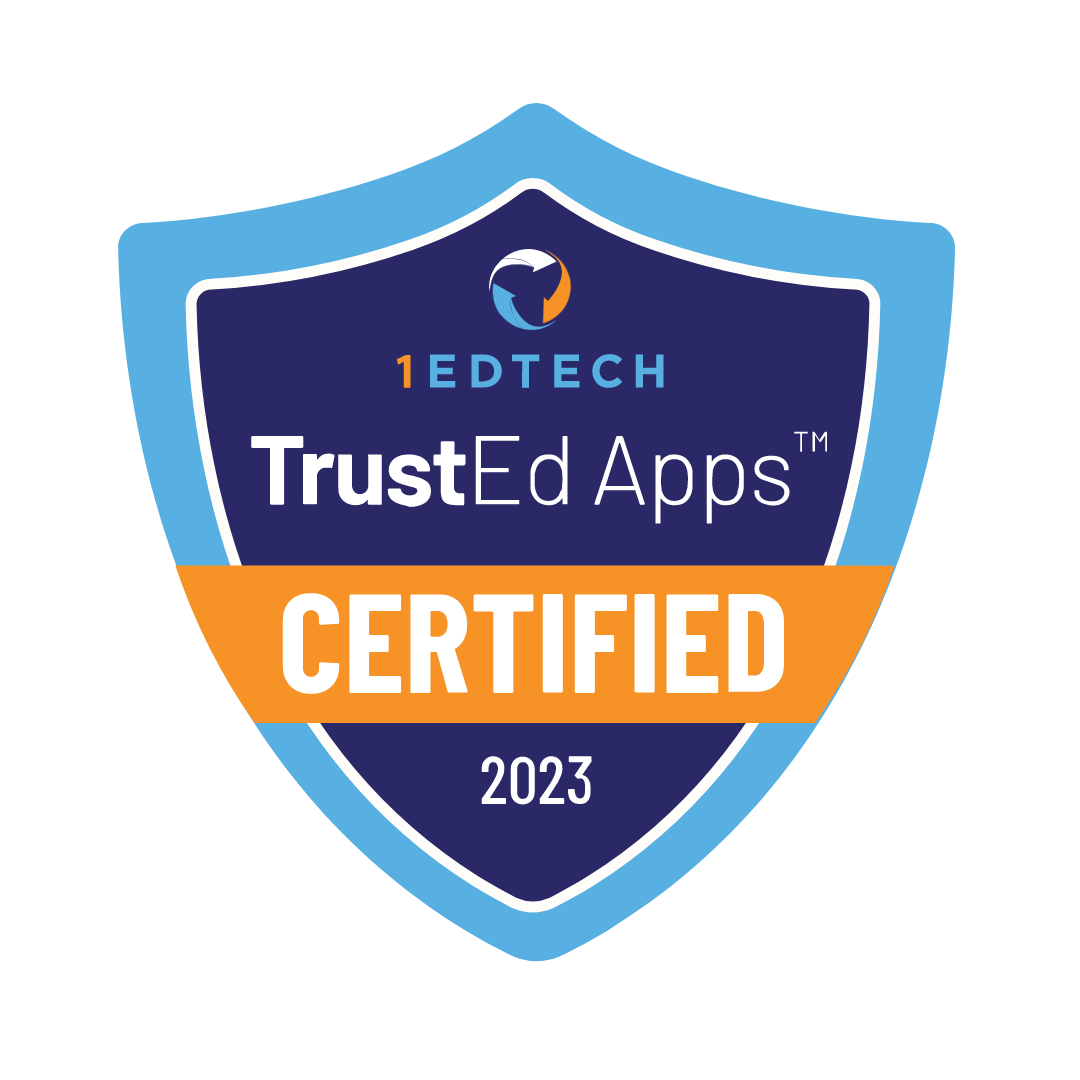Contents
Individualized Education Program (IEP) is a required by law educational plan for students with disabilities. IEP ensures students receive all the support and accommodations necessary. Parents, teachers, along with specialists, create an IEP for every student with special needs. 7.5 million students in the U.S. received special education or related services in 2022-2023, according to the National Center for Education Statistics (NCES). IEPs increased educational standards for students with disabilities and made the process more inclusive and fair.

Online IEP is IEP presented in digital form. Online IEPs fulfill all regulations from the Individuals with Disabilities Education Act (IDEA), but offer a more flexible and accessible format. This format allows parents, teachers, and specialists to develop IEPs together more efficiently. Let’s overview details about how the process of online IEPs learning works.
Who Is an Online IEP For?
Online IEPs apply to students with special needs who are eligible for special education service provisions guaranteed by IDEA. Special needs are specific conditions individuals have due to their disabilities. Most students are born with these disabilities or discover them early. Traditional education becomes unbearable for many children because it doesn’t accommodate their needs. Here are four categories of challenges children face.

Physical Disabilities
Students with special needs experience difficulty with movement, coordination, or physical functioning. These students have conditions like cerebral palsy, muscular dystrophy, or spinal cord injuries. These difficulties make it challenging for students to navigate the learning environment. These students require special adaptations, such as assistive devices or modified classroom setups.
Cognitive and Learning Disabilities
Students with special needs experience difficulty with comprehension, memory, and critical thinking such as dyslexia, dyscalculia, or intellectual disabilities. Some students struggle with understanding geometry and subjects requiring abstract thinking. Other students face challenges when learning new materials. Students with special needs struggle to understand certain words or get their meaning on the first try. Confusing letters or rearranging words is a common issue for these students. These challenges make traditional learning methods unworkable for them.
Sensory Disabilities
Students with special needs have difficulties with sensory comprehension including problems with hearing or seeing. Students with hearing disabilities have more communication difficulties.They need accommodations such as sign language interpreters, assistance with hearing devices, and videos in caption. Students with visual disabilities need braille materials, screen readers, or enlarged texts.

Emotional and Behavioral Disabilities
Students with special needs experience difficulty with self-regulation, attention, and social interactions. These challenges prevent them from fitting into the traditional school environment. The difficulties increase when they face bullying or different forms of rejection.
Health Impairments
Students with special needs experience various conditions, such as ADHD, epilepsy, or asthma. These conditions reduce their alertness and stamina and affect their ability to concentrate and participate in school activities. Students with health problems need frequent breaks, modified schedules, or health monitoring during the day.
Each of these challenges necessitates personalized interventions for students, such as modified teaching strategies, or other solutions. Parents and teachers play a big role in providing these solutions to students.
Why Is an Online IEP Better Than the Traditional Approach?
Online IEP presents certain advantages over traditional IEP processes. Let’s overview some key benefits for online IEPs.

Online Documentation
IEP documentation is managed online. Parents have access to their child’s IEP plan, goals, and progress reports at any time. Special services such as speech and occupational therapy are virtually available for parents to sign in.
Online Collaboration
Parents, teachers and students have access to chats and online meetings instead of face-to-face. Online meetings help to get more effective communication and feedback. Students with physical disabilities reduce problems with transportation while receiving all the support they need. The special education teachers have the opportunity to monitor students’ progress and deliver changes online.
Assistive Technology
Online IEP provides assistive technology for students with disabilities as an accommodation to their disability. It includes laptops or tablets modified to meet the learning needs of each student. Online services by IEP ensure continuity regardless of whether learning is going on at home or in school.
How Is an Online IEP Created?
Online IEP has a similar developing process as traditional traditional IEP, but all data is stored digitally.
Process starts with the initial evaluation regarding student’s eligibility for special education services under the IDEA. Learn more at the IDEA.
Parents, general education teachers, special education teachers, and specialists meet virtually to discuss the student’s specific needs, academic goals, and required accommodations to create IEP.
IEP is digitally stored and accessed by parents and educators at any time. IEP needs annual review according to the student’s progress.
Online communication assists in the process of updating and following IEP, creating transparency and efficiency.
How Is an Online IEP Adapted for Students?
Online IEPs are created to meet the learning styles and unique needs of every single student. Let’s take a look at several key adaptations for students with disabilities in online IEPs.

Learning Plan
Students with special needs receive individual learning plans. This learning plan is designed to meet students’ educational needs. Online learning plans have benefits, such as flexibility and self-pace, which is hard to get for students in a traditional classroom. IEPs’s learning plan sets measurable goals. These goals are important in guaranteeing the effectiveness of education.
Special Services
IEPs allow students to have access to special services like speech therapy, occupational therapy, and physical therapy. Students with disabilities need these services for learning. Online IEPs provide necessary adjustments in material delivery, such as pre-recorded lectures, using screen readers, and interactive media content.
Students in online learning utilize assistive technologies. These technologies include screen readers, speech-to-text software, and communication devices. These tools help bridge the gap between their learning challenges and the educational content.
Parent Involvement
IEPs provide collaboration between parents, teachers and specialists by establishing a partnership in education for students with special needs.This collaboration creates transparency and agreement in the student’s educational plan.
Law Protection
IEPs ensure student’s rights are protected by the law. IDEA regulatels creation of IEPs. It means schools are obliged to implement all services and supports mentioned in the IEP document. IEP guarantees more inclusion in the learning environment.
Digital Platforms and Tools
Online learning takes place using digital platforms and various tools. Digital platforms are where students access their educational plans, learning materials, and complete knowledge assessments. Students use different digital tools for various tasks. They use Zoom for video calls, WhatsApp for ongoing communication, and much more.
Social Support Through Online Communities
Students with special needs face more challenges compared to typical students. Such students find it harder to initiate a conversation or understand its context. Some students struggle to communicate with others due to their emotional instability.
Students with special needs face many communication challenges, and traditional school staff often do not provide support in addressing these issues. Online education offers these students access to various support groups where they can find understanding and assistance.
What Should Parents Consider When Choosing an Online IEP?
Parents are the most important part of their child’s online IEP. Parents need to consider several key details.

Create the Right Environment at Home
Parents understand the unique needs of their children and create an environment helping them focus and learn. Parents eliminate unnecessary noise and lighting. Parents assist children in setting up and using assistive devices. These devices include screen readers, speech-to-text software, or customized keyboards designed for physical limitations.
Law
Parents need to know their rights under the IDEA. Here are some important rights parents of students with special needs have:
- The right to request special education services to their child
- The right to participate in IEP meetings
- The right to access their child progress reports and all IEP documentations
Structure a Schedule for Rest and Study
Students with special needs experience anxiety and difficulty staying focused. These students struggle to manage their schedules independently. Parents step in to assist, creating a schedule balancing study time and rest. This schedule helps students feel more at ease and improves their concentration on tasks.
Track Successes and Failures
Parents monitor assignments and deadlines closely. The monitoring helps children to stay on track with their educational goals. This monitoring is especially useful for children with Attention-Deficit/Hyperactivity Disorder (ADHD).
Communicate with Educators
Communication between parents and teachers becomes critical for students who require IEPs. Parents help bridge the gap by discussing learning strategies with educators. Parents and teachers evaluate the successes and challenges of the children and suggest solutions. These solutions turn into an educational plan for the students. The plan is updated whenever parents or teachers see the need for adjustments to better support the students.
Support During Emotional Swings
Students with special needs experience emotional instability. Many ordinary things can upset, anger, or trigger other strong emotions in students. These emotions affect their productivity. Parents encourage them and use calming techniques. These techniques include deep breathing exercises to reduce anxiety, visual schedules to provide structure and predictability, and sensory breaks. Sensory breaks include activities like fidget tools or quiet time in a low-stimulus environment.
Online IEP at Legacy Online School
“Inclusion is at the heart of our community at Legacy Online School. We are committed to creating a welcoming, respectful, collaborative environment where everyone feels valued and heard”

Legacy Online School provides personal learning support specialists to help students with IEP. It allows students to create their routine, leading to academic progress.
Legacy Online School’s teachers provide personalized attention and support to each student. We have experts with extensive experience in working with special needs children. These experts know which methods to use to help these students reach their full potential.
Legacy Online School cares about students with special needs. Legacy Online School has certified, skilled teachers from diverse cultural backgrounds. Our teachers improve their skills and methods continually to help students with special needs. Learn more about how we work with students with special needs on our school’s website.
Legacy Online School’s platform integrates assistive technology tools, helping students to receive quality education. Legacy Online School provides access for parents to regular progress reports. These reports detail how well the students are meeting their IEP goals and highlight areas for improvement.
Enroll with us today and change your child’s education!











